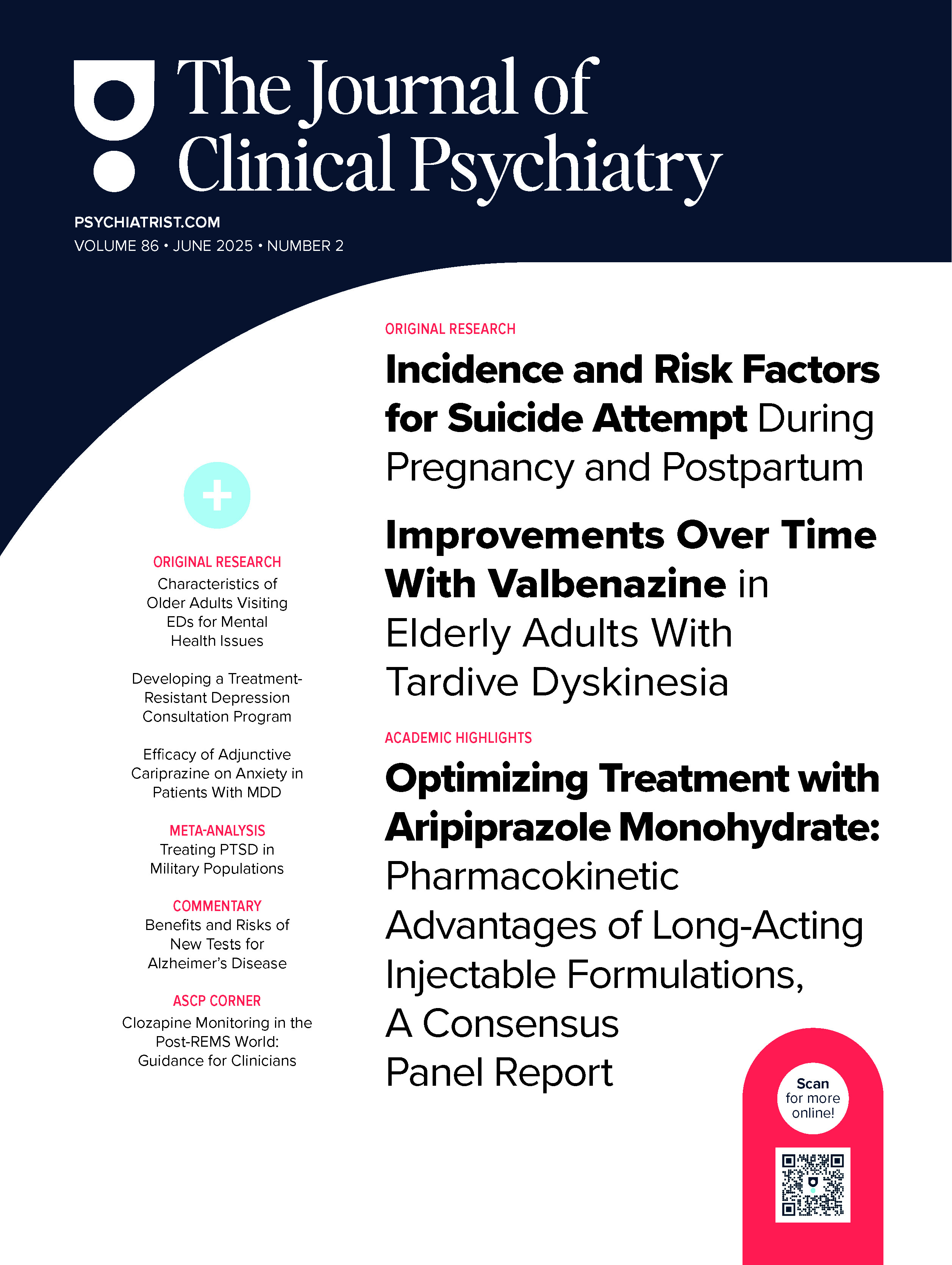
ABSTRACT
Objective: Dyslipidemia is a controversial risk for Alzheimer’s disease (AD) with unknown mechanisms. This study aimed to investigate polygenic effects of the lipid metabolic pathway on cerebrospinal fluid (CSF) core biomarkers, cognition, and default mode network (DMN).
Methods: Cross-sectional data on serum lipids, CSF core biomarkers, and functional MRI findings for 113 participants (25 cognitively normal, 20 with subjective cognitive decline, 24 early amnestic, 23 with late mild cognitive impairment, and 21 with AD) from the Alzheimer’s Disease Neuroimaging Initiative were included. Different cognitive stages were categorized based on neuropsychological assessments. Multivariable linear regression analyses were conducted to investigate the polygenic and interactive effects on the DMN. The correlations of lipid-related polygenes and serum lipids with cognitive performance were also studied via regression analyses.
Results: The polygenic scores were significantly correlated with CSF levels of core biomarkers (P < .05) but not with cognition. Several serum lipids were associated with total tau. CSF core biomarkers and 6 serum lipids both could impact cognition in a nonlinear manner. Polygenic effects exhibited diverse trajectories on the DMN subsystems across the AD spectrum. Extensive genetic and interactive effects were mainly concentrated in the cortical frontal-parietal network and subcortical regions. Brain regions of lipid metabolites linking to DMN involved sensorimotor network and occipital lobe.
Conclusions: Polygenic effects of the lipid metabolic pathway could accelerate pathological changes and disrupted DMN subsystem trajectory across the AD spectrum. These results deepen the understanding of the mechanism of lipid metabolism affecting the neural system and provide several lipid indicators that enable the impairments of lipid metabolism on the brain to be monitored.
Members Only Content
This full article is available exclusively to Professional tier members. Subscribe now to unlock the HTML version and gain unlimited access to our entire library plus all PDFs. If you’re already a subscriber, please log in below to continue reading.
References (60)

- Refolo LM, Malester B, LaFrancois J, et al. Hypercholesterolemia accelerates the Alzheimer’s amyloid pathology in a transgenic mouse model. Neurobiol Dis. 2000;7(4):321–331. PubMed CrossRef
- Luo R, Su LY, Li G, et al. Activation of PPARA-mediated autophagy reduces Alzheimer disease-like pathology and cognitive decline in a murine model. Autophagy. 2020;16(1):52–69. PubMed CrossRef
- Whitmer RA, Gunderson EP, Barrett-Connor E, et al. Obesity in middle age and future risk of dementia: a 27 year longitudinal population based study. BMJ. 2005;330(7504):1360. PubMed CrossRef
- Proitsi P, Lupton MK, Velayudhan L, et al; Alzheimer’s Disease Neuroimaging Initiative; GERAD1 Consortium. Genetic predisposition to increased blood cholesterol and triglyceride lipid levels and risk of Alzheimer disease: a Mendelian randomization analysis. PLoS Med. 2014;11(9):e1001713. PubMed CrossRef
- Cutler RG, Kelly J, Storie K, et al. Involvement of oxidative stress-induced abnormalities in ceramide and cholesterol metabolism in brain aging and Alzheimer’s disease. Proc Natl Acad Sci U S A. 2004;101(7):2070–2075. PubMed CrossRef
- Leduc V, Jasmin-Bélanger S, Poirier J. APOE and cholesterol homeostasis in Alzheimer’s disease. Trends Mol Med. 2010;16(10):469–477. PubMed CrossRef
- Ehehalt R, Keller P, Haass C, et al. Amyloidogenic processing of the Alzheimer beta-amyloid precursor protein depends on lipid rafts. J Cell Biol. 2003;160(1):113–123. PubMed CrossRef
- Xiong H, Callaghan D, Jones A, et al. Cholesterol retention in Alzheimer’s brain is responsible for high beta- and gamma-secretase activities and Abeta production. Neurobiol Dis. 2008;29(3):422–437. PubMed CrossRef
- Götz J, Chen F, van Dorpe J, et al. Formation of neurofibrillary tangles in P301l tau transgenic mice induced by Abeta 42 fibrils. Science. 2001;293(5534):1491–1495. PubMed CrossRef
- van der Kant R, Goldstein LSB, Ossenkoppele R. Amyloid-β-independent regulators of tau pathology in Alzheimer disease. Nat Rev Neurosci. 2020;21(1):21–35. PubMed CrossRef
- Popp J, Meichsner S, Kölsch H, et al. Cerebral and extracerebral cholesterol metabolism and CSF markers of Alzheimer’s disease. Biochem Pharmacol. 2013;86(1):37–42. PubMed CrossRef
- Wong MW, Braidy N, Poljak A, et al. Dysregulation of lipids in Alzheimer’s disease and their role as potential biomarkers. Alzheimers Dement. 2017;13(7):810–827. PubMed CrossRef
- Darst BF, Koscik RL, Racine AM, et al. Pathway-specific polygenic risk scores as predictors of amyloid-β deposition and cognitive function in a sample at increased risk for Alzheimer’s disease. J Alzheimers Dis. 2017;55(2):473–484. PubMed CrossRef
- Koschack J, Lütjohann D, Schmidt-Samoa C, et al. Serum 24S-hydroxycholesterol and hippocampal size in middle-aged normal individuals. Neurobiol Aging. 2009;30(6):898–902. PubMed CrossRef
- Zhang T, Li H, Zhang J, et al. Impacts of high serum total cholesterol level on brain functional connectivity in non-demented elderly. J Alzheimers Dis. 2016;50(2):455–463. PubMed CrossRef
- Moazzami K, Power MC, Gottesman R, et al. Association of mid-life serum lipid levels with late-life brain volumes: the atherosclerosis risk in communities neurocognitive study (ARICNCS). Neuroimage. 2020;223:117324. PubMed CrossRef
- Iriondo A, García-Sebastian M, Arrospide A, et al. Plasma lipids are associated with white matter microstructural changes and axonal degeneration. Brain Imaging Behav. 2021;15(2):1043–1057. PubMed CrossRef
- Qin P, Liu Y, Shi J, et al. Dissociation between anterior and posterior cortical regions during self-specificity and familiarity: a combined fMRI-meta-analytic study. Hum Brain Mapp. 2012;33(1):154–164. PubMed CrossRef
- Leech R, Kamourieh S, Beckmann CF, et al. Fractionating the default mode network: distinct contributions of the ventral and dorsal posterior cingulate cortex to cognitive control. J Neurosci. 2011;31(9):3217–3224. PubMed CrossRef
- Jones DT, Knopman DS, Gunter JL, et al; Alzheimer’s Disease Neuroimaging Initiative. Cascading network failure across the Alzheimer’s disease spectrum. Brain. 2016;139(pt 2):547–562. PubMed CrossRef
- Damoiseaux JS, Prater KE, Miller BL, et al. Functional connectivity tracks clinical deterioration in Alzheimer’s disease. Neurobiol Aging. 2012;33(4):828.e19–828.e30. PubMed CrossRef
- Aisen PS, Petersen RC, Donohue M, et al; Alzheimer’s Disease Neuroimaging Initiative. Alzheimer’s Disease Neuroimaging Initiative 2 clinical core: progress and plans. Alzheimers Dement. 2015;11(7):734–739. PubMed CrossRef
- Harold D, Abraham R, Hollingworth P, et al. Genome-wide association study identifies variants at CLU and PICALM associated with Alzheimer’s disease. Nat Genet. 2009;41(10):1088–1093. PubMed CrossRef
- Olgiati P, Politis AM, Papadimitriou GN, et al. Genetics of late-onset Alzheimer’s disease: update from the alzgene database and analysis of shared pathways. Int J Alzheimers Dis. 2011;2011:832379. PubMed CrossRef
- Wang Y, Liu S, Wang J, et al. Association between LRP1 C766T polymorphism and Alzheimer’s disease susceptibility: a meta-analysis. Sci Rep. 2017;7(1):8435. PubMed CrossRef
- Xiao E, Chen Q, Goldman AL, et al. Late-onset Alzheimer’s disease polygenic risk profile score predicts hippocampal function. Biol Psychiatry Cogn Neurosci Neuroimaging. 2017;2(8):673–679. PubMed CrossRef
- Rogaeva E, Meng Y, Lee JH, et al. The neuronal sortilin-related receptor SORL1 is genetically associated with Alzheimer disease. Nat Genet. 2007;39(2):168–177. PubMed CrossRef
- Chen JJ, Li YM, Zou WY, et al. Relationships between CETP genetic polymorphisms and Alzheimer’s disease risk: a meta-analysis. DNA Cell Biol. 2014;33(11):807–815. PubMed CrossRef
- Wollmer MA. Cholesterol-related genes in Alzheimer’s disease. Biochim Biophys Acta. 2010;1801(8):762–773. PubMed CrossRef
- Hollingworth P, Harold D, Sims R, et al; Alzheimer’s Disease Neuroimaging Initiative; CHARGE consortium; EADI1 consortium. Common variants at ABCA7, MS4A6A/MS4A4E, EPHA1, CD33 and CD2AP are associated with Alzheimer’s disease. Nat Genet. 2011;43(5):429–435. PubMed CrossRef
- Saykin AJ, Shen L, Foroud TM, et al; Alzheimer’s Disease Neuroimaging Initiative. Alzheimer’s Disease Neuroimaging Initiative biomarkers as quantitative phenotypes: Genetics core aims, progress, and plans. Alzheimers Dement. 2010;6(3):265–273. PubMed CrossRef
- Ahmad S, Bannister C, van der Lee SJ, et al. Disentangling the biological pathways involved in early features of Alzheimer’s disease in the Rotterdam Study. Alzheimers Dement. 2018;14(7):848–857. PubMed CrossRef
- Jia XZ, Wang J, Sun HY, et al. RESTplus: an improved toolkit for resting-state functional magnetic resonance imaging data processing. Sci Bull (Beijing). 2019;64(14):953–954. CrossRef
- Kaneko H, Arakawa M, Funatsu K. Development of a new regression analysis method using independent component analysis. J Chem Inf Model. 2008;48(3):534–541. PubMed CrossRef
- Fan L, Li H, Zhuo J, et al. The Human Brainnetome Atlas: a new brain atlas based on connectional architecture. Cereb Cortex. 2016;26(8):3508–3526. PubMed CrossRef
- Nagy Z, Esiri MM, Jobst KA, et al. Influence of the apolipoprotein E genotype on amyloid deposition and neurofibrillary tangle formation in Alzheimer’s disease. Neuroscience. 1995;69(3):757–761. PubMed CrossRef
- Schneider A, Schulz-Schaeffer W, Hartmann T, et al. Cholesterol depletion reduces aggregation of amyloid-beta peptide in hippocampal neurons. Neurobiol Dis. 2006;23(3):573–577. PubMed CrossRef
- Reitz C, Tang MX, Luchsinger J, et al. Relation of plasma lipids to Alzheimer disease and vascular dementia. Arch Neurol. 2004;61(5):705–714. PubMed CrossRef
- van den Kommer TN, Dik MG, Comijs HC, et al. Total cholesterol and oxysterols: early markers for cognitive decline in elderly? Neurobiol Aging. 2009;30(4):534–545. PubMed CrossRef
- Hanseeuw BJ, Betensky RA, Jacobs HIL, et al. Association of amyloid and tau with cognition in preclinical Alzheimer disease: a longitudinal study. JAMA Neurol. 2019;76(8):915–924. PubMed CrossRef
- Hansson O, Seibyl J, Stomrud E, et al; Swedish BioFINDER study group; Alzheimer’s Disease Neuroimaging Initiative. CSF biomarkers of Alzheimer’s disease concord with amyloid-β PET and predict clinical progression: a study of fully automated immunoassays in BioFINDER and ADNI cohorts. Alzheimers Dement. 2018;14(11):1470–1481. PubMed CrossRef
- Ritchie C, Smailagic N, Noel-Storr AH, et al. CSF tau and the CSF tau/ABeta ratio for the diagnosis of Alzheimer’s disease dementia and other dementias in people with mild cognitive impairment (MCI). Cochrane Database Syst Rev. 2017;3:CD010803. PubMed CrossRef
- van der Vlies AE, Verwey NA, Bouwman FH, et al. CSF biomarkers in relationship to cognitive profiles in Alzheimer disease. Neurology. 2009;72(12):1056–1061. PubMed CrossRef
- Mattsson N, Palmqvist S, Stomrud E, et al. Staging β-amyloid pathology with amyloid positron emission tomography. JAMA Neurol. 2019;76(11):1319–1329. PubMed CrossRef
- Jones DT, Machulda MM, Vemuri P, et al. Age-related changes in the default mode network are more advanced in Alzheimer disease. Neurology. 2011;77(16):1524–1531. PubMed CrossRef
- Andrews-Hanna JR, Reidler JS, Sepulcre J, et al. Functional-anatomic fractionation of the brain’s default network. Neuron. 2010;65(4):550–562. PubMed CrossRef
- Buckner RL, Andrews-Hanna JR, Schacter DL. The brain’s default network: anatomy, function, and relevance to disease. Ann N Y Acad Sci. 2008;1124(1):1–38. PubMed CrossRef
- Amodio DM, Frith CD. Meeting of minds: the medial frontal cortex and social cognition. Nat Rev Neurosci. 2006;7(4):268–277. PubMed CrossRef
- Leech R, Sharp DJ. The role of the posterior cingulate cortex in cognition and disease. Brain. 2014;137(pt 1):12–32. PubMed CrossRef
- Fiebelkorn IC, Pinsk MA, Kastner S. A dynamic interplay within the frontoparietal network underlies rhythmic spatial attention. Neuron. 2018;99(4):842–853.e8. PubMed CrossRef
- Aron AR, Durston S, Eagle DM, et al. Converging evidence for a fronto-basal-ganglia network for inhibitory control of action and cognition. J Neurosci. 2007;27(44):11860–11864. PubMed CrossRef
- Eagle DM, Baunez C, Hutcheson DM, et al. Stop-signal reaction-time task performance: role of prefrontal cortex and subthalamic nucleus. Cereb Cortex. 2008;18(1):178–188. PubMed CrossRef
- Bakker A, Krauss GL, Albert MS, et al. Reduction of hippocampal hyperactivity improves cognition in amnestic mild cognitive impairment. Neuron. 2012;74(3):467–474. PubMed CrossRef
- Qi Z, Wu X, Wang Z, et al. Impairment and compensation coexist in amnestic MCI default mode network. Neuroimage. 2010;50(1):48–55. PubMed CrossRef
- Ye Q, Chen H, Su F, et al. An inverse u-shaped curve of resting-state networks in individuals at high risk of Alzheimer’s disease. J Clin Psychiatry. 2018;79(2):17m11583. PubMed CrossRef
- Jessen F, Amariglio RE, Buckley RF, et al. The characterisation of subjective cognitive decline. Lancet Neurol. 2020;19(3):271–278. PubMed CrossRef
- Aisen PS, Petersen RC, Donohue MC, et al; Alzheimer’s Disease Neuroimaging Initiative. Clinical core of the Alzheimer’s Disease Neuroimaging Initiative: progress and plans. Alzheimers Dement. 2010;6(3):239–246. PubMed CrossRef
- Stice E, Yokum S, Burger KS, et al. Youth at risk for obesity show greater activation of striatal and somatosensory regions to food. J Neurosci. 2011;31(12):4360–4366. PubMed CrossRef
- Gupta A, Mayer EA, Hamadani K, et al. Sex differences in the influence of body mass index on anatomical architecture of brain networks. Int J Obes. 2017;41(8):1185–1195. PubMed CrossRef
- Legget KT, Wylie KP, Cornier MA, et al. Exercise-related changes in between-network connectivity in overweight/obese adults. Physiol Behav. 2016;158:60–67. PubMed CrossRef




